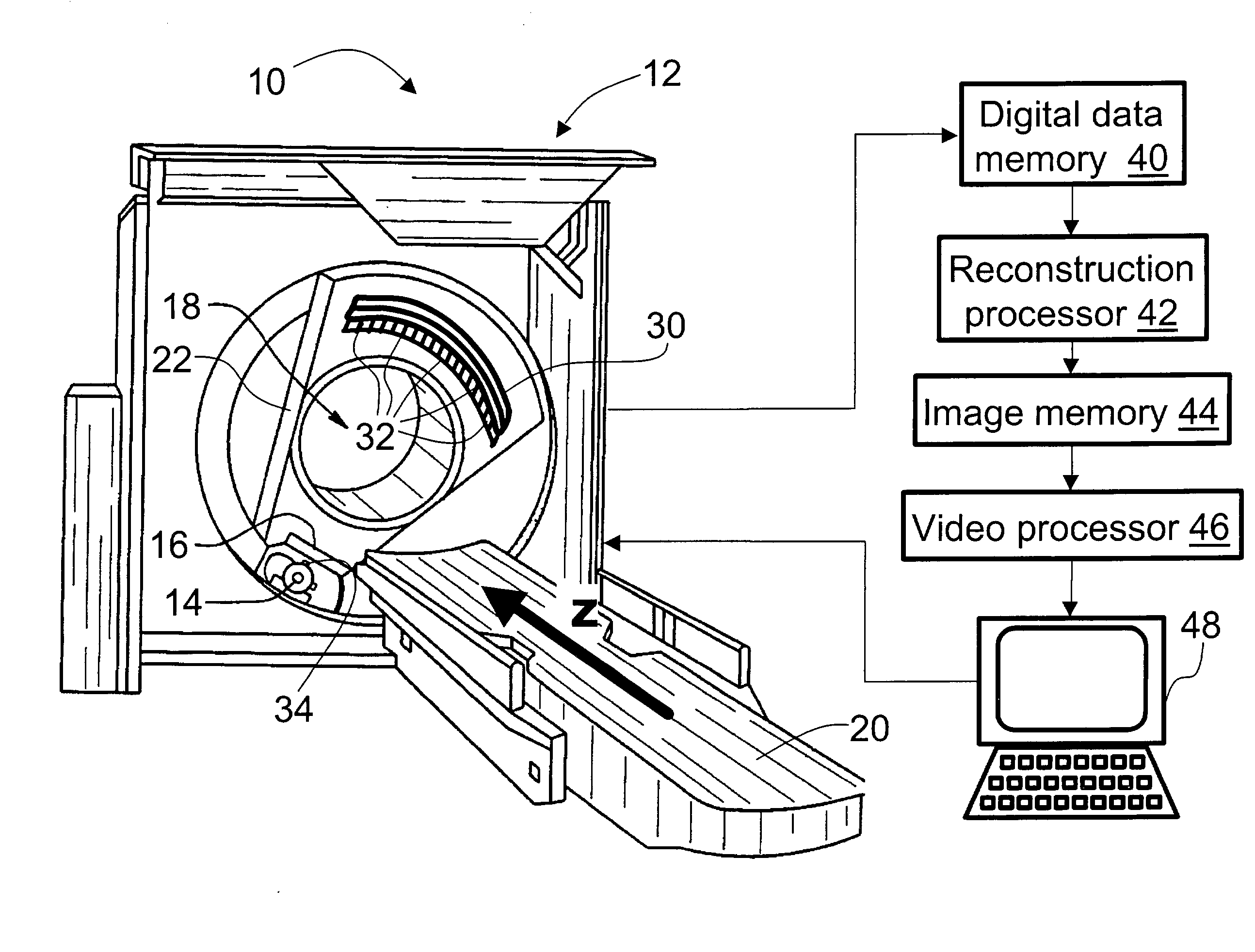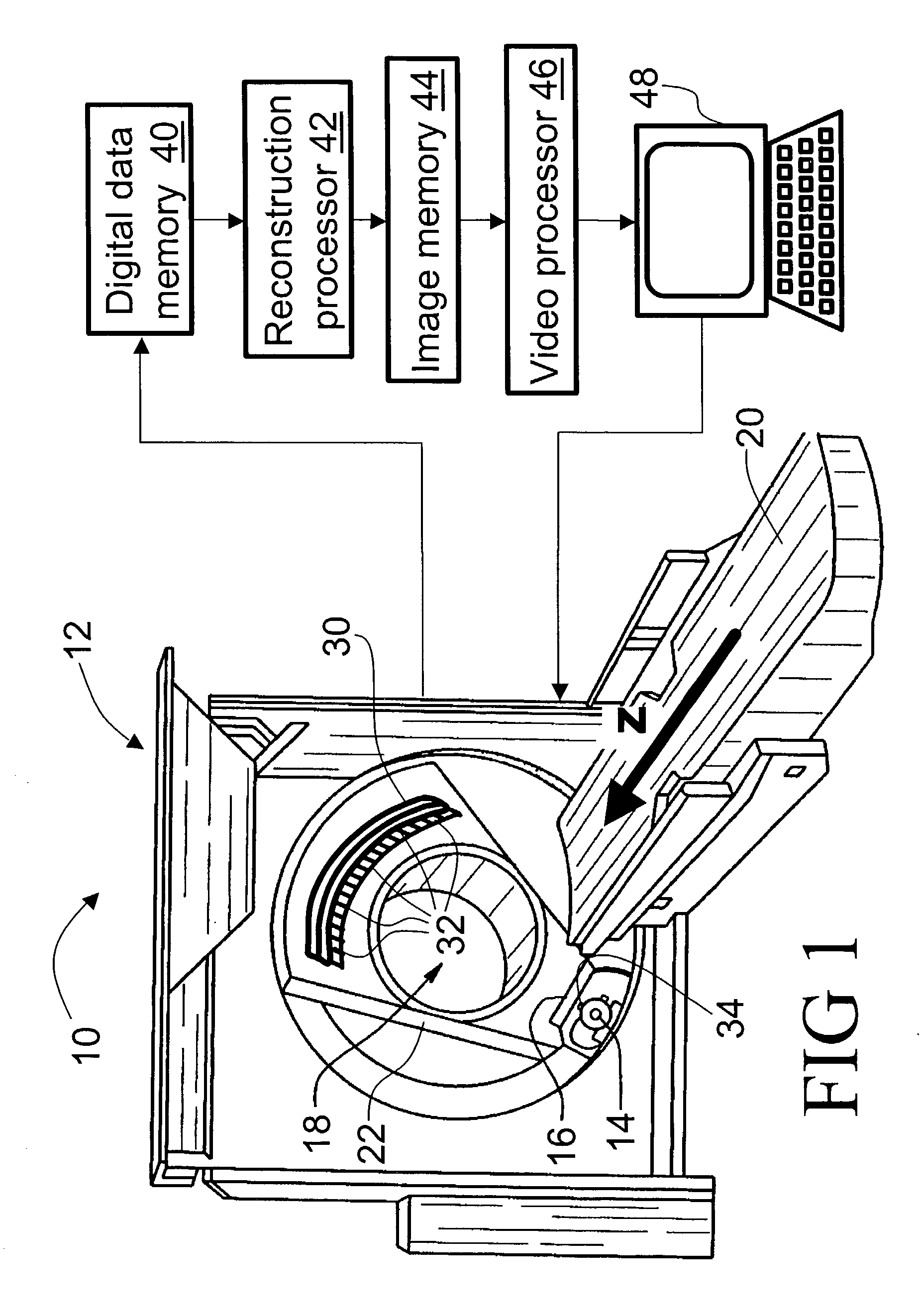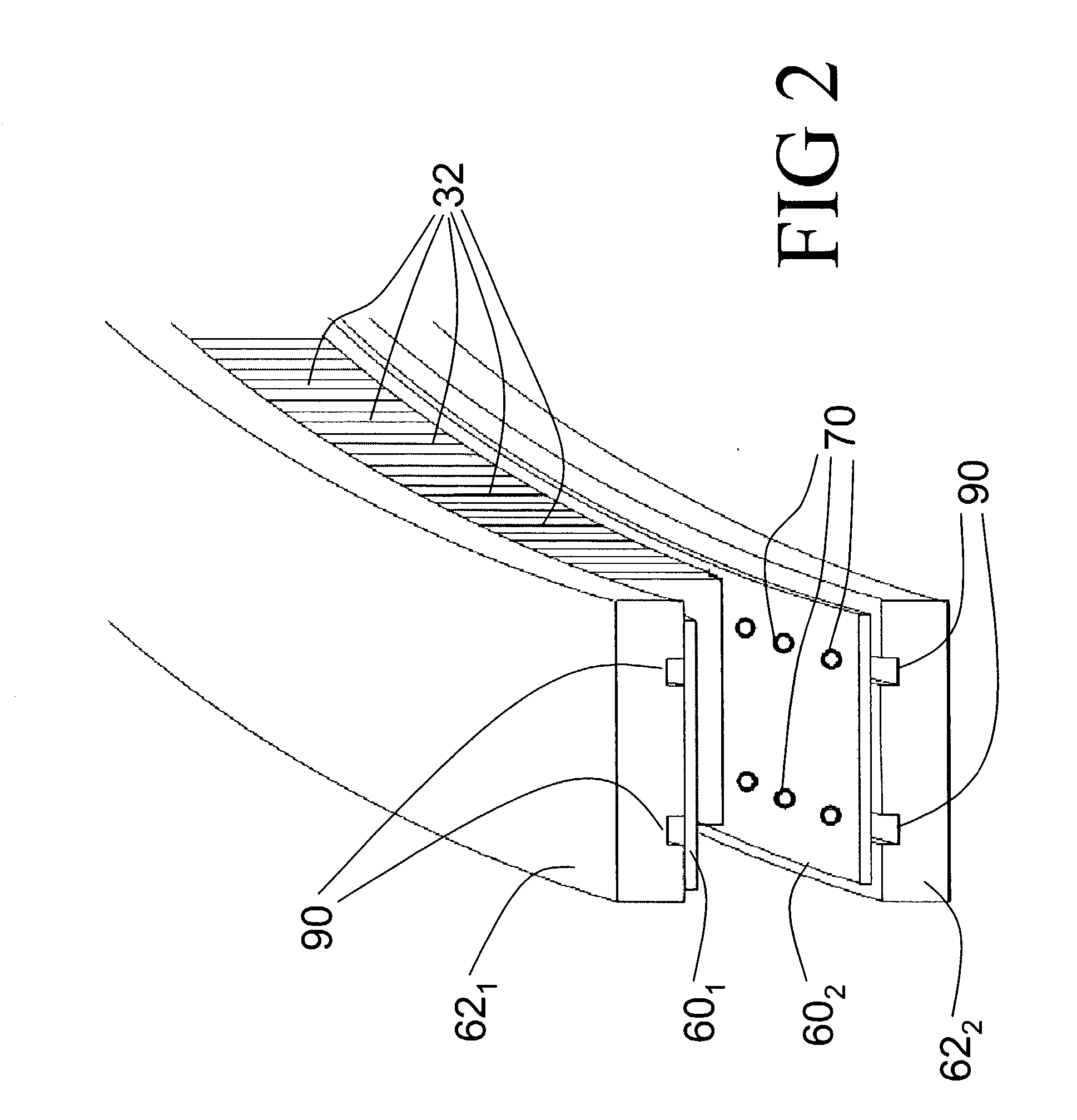Method and apparatus for alignment of anti-scatter grids for computed tomography detector arrays
- Summary
- Abstract
- Description
- Claims
- Application Information
AI Technical Summary
Benefits of technology
Problems solved by technology
Method used
Image
Examples
Embodiment Construction
[0036] With reference to FIG. 1, a computed tomography (CT) imaging apparatus or CT scanner 10 includes a gantry 12. An x-ray source 14 and a source collimator 16 cooperate to produce a fan-shaped, cone-shaped, wedge-shaped, or otherwise-shaped x-ray beam directed into an examination region 18 which contains a subject (not shown) such as a patient arranged on a subject support 20. The subject support 20 is linearly movable in a Z-direction while the x-ray source 14 on a rotating gantry 22 rotates around the Z-axis.
[0037] In an exemplary helical imaging mode, the rotating gantry 22 rotates simultaneously with linear advancement of the subject support 20 to produce a generally helical trajectory of the x-ray source 14 and collimator 16 about the examination region 18. However, other imaging modes can also be employed, such as a single- or multi-slice imaging mode in which the gantry 22 rotates as the subject support 20 remains stationary to produce a generally circular trajectory of t...
PUM
 Login to View More
Login to View More Abstract
Description
Claims
Application Information
 Login to View More
Login to View More - R&D
- Intellectual Property
- Life Sciences
- Materials
- Tech Scout
- Unparalleled Data Quality
- Higher Quality Content
- 60% Fewer Hallucinations
Browse by: Latest US Patents, China's latest patents, Technical Efficacy Thesaurus, Application Domain, Technology Topic, Popular Technical Reports.
© 2025 PatSnap. All rights reserved.Legal|Privacy policy|Modern Slavery Act Transparency Statement|Sitemap|About US| Contact US: help@patsnap.com



